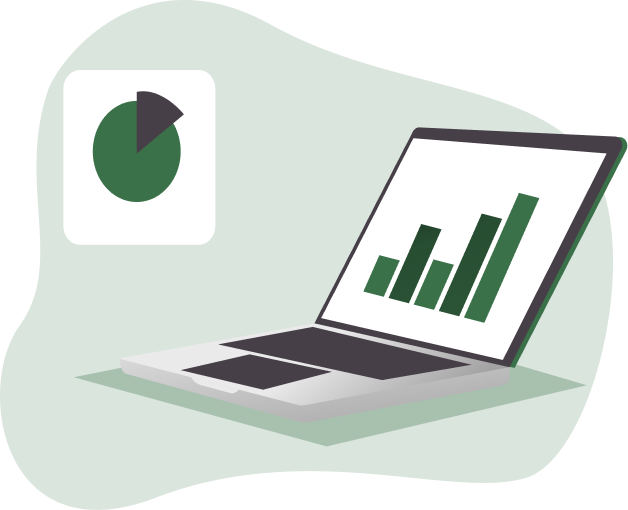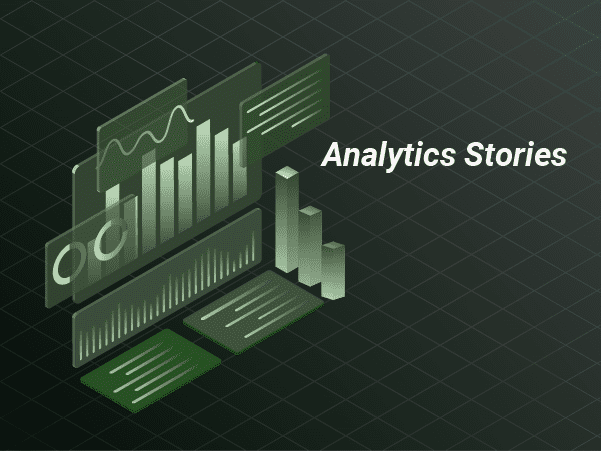Analytics Stories Course
Who is Dr. Wayne Winston
and how can his Analytics
Stories Course help you?
Stories Course help you?
Tutorials
0
+
Hours Of Content
0
+
Downloadable Files
0
+
After enrolling, you will get lifetime access to more than 120 videos covering 15+ hours of content and 200+ downloadable Excel files.
Lifetime Access
All of our videos are available to you 24/7 from anywhere, from any device. All you need is an internet connection.
Watch on demand
Yes! If you finish at least 50% of the course within the first 60 days and aren't 100% satisfied, we will issue a 100% money back gaurantee, no questions asked.
60-Day Money-Back GuaranteeWhy Should You Enroll in The Analytics Stories Course?
Trusted by the most data driven companies worldwide

Get the Analytics Stories Course for Just $147
This is the complete training. 40 years of experience helping virtually all of the Fortune 500 companies through his books or in person training.
120+ videos, 200+ downloadable files covering 15+ hours of content. Just scroll down to see what each video covers.
Unlock Lifetime Access
to this Course
Introduction to Descriptive Statistics: Understanding Data in Excel (8:36)
Master mean, median, standard deviation, and skewness calculations.
From Data to Decisions: Stock Market Trends & Risk Analysis (6:24)
Learn how to analyze annual investment returns using Excel’s statistical functions.
Mastering Probability Distributions: Normal Curves & Random Variables (12:06)
Explore Excel techniques for probability analysis, outlier detection, and random variable modeling.
The 1969 Draft Lottery: Was It Really Fair? (7:07)
Understand how birth month might have influenced draft lottery numbers in 1969.
The 1969 Draft Lottery: Statistical Proof It Wasn’t Random? (7:53)
Master Excel’s statistical tools to analyze randomness and fairness in real-world events.
Boxplots & Bias: Visualizing the 1969 Draft Lottery (4:39)
Understand how box-and-whisker plots can highlight key insights in real-world data.
Who Really Won in 2000? Analyzing the Gore vs. Bush Election (9:59)
Discover how statistical modeling can reveal biases in voting patterns and election results.
Ranking the Biggest Upsets in Sports History (7:44)
Explore Excel techniques for ranking the biggest upsets in history, from Leicester City to the Miracle on Ice.
How to Model a Ponzi Scheme: The Bernie Madoff Case Study (8:31)
Learn how Bernie Madoff’s Ponzi scheme worked and why it collapsed in 2008.
Bernie Madoff’s Alleged Strategy: How the Split-Strike Scheme Fooled Investors (7:09)
Learn how Bernie Madoff convinced investors with a strategy that seemed low-risk but was mathematically impossible.
From Population Data to Fraud Detection: Benford’s Law Explained (6:04)
Explore Excel techniques for applying Benford’s Law to fraud detection and big data analysis.
Why Benford’s Law Works: The Math Behind Real-World Numbers (3:35)
How to Use Excel to Simulate Benford’s Law in Action.
How Benford’s Law Exposed Bernie Madoff’s Fraudulent Returns (8:33)
Understand why real-world numbers follow Benford’s Law—and why Madoff’s didn’t.
Data Science: Why Madoff’s Returns Were Too Good to Be True (5:35)
Discover why Madoff’s Sharpe Ratio was an impossible red flag for savvy investors.
The American Worker: Has Income Really Improved Over the Last 50 Years? (10:14)
Discover how inflation-adjusted median income has stagnated despite economic growth.
How to Use Excel to Measure Income Inequality & Wealth Distribution (8:20)
Explore Excel techniques for visualizing income distribution and global inequality rankings.
Data Analytics: Predicting Demand & Stock Market Sensitivity (12:57)
Learn how to estimate demand curves and calculate stock beta using Excel’s regression tools.
R-Squared, Correlation & Regression to the Mean: What They Really Mean (15:05)
Explore Excel techniques for calculating correlation, standard error, and predictive accuracy.
Understanding the Power Curve & Elasticity: Analyzing Non-Linear Demand (7:36)
Learn how power curves model price elasticity and why demand isn’t always linear.
Intergenerational Mobility: Can Kids Really Do Better Than Their Parents? (8:14)
Explore Excel techniques for comparing parent and child income levels across generations.
From Poverty to Prosperity: The Data Behind Economic Mobility (6:47)
Learn how rank-rank mobility and intergenerational elasticity measure economic opportunity.
Mastering Wealth Mobility: Understanding Quintiles & The Gatsby Curve (6:31)
Learn how the quintile approach measures intergenerational mobility and wealth persistence.
Mastering Regression Analysis: How Economic Status Predicts Student Achievement (9:41)
Learn how free lunch percentage predicts school test scores using Excel’s regression tools.
Evaluating Teachers with Test Scores: Does It Really Work? (5:42)
Learn how test scores are used to evaluate teachers and why the data may be misleading.
Data Analytics in Excel: Comparing Teacher Evaluation Methods (3:54)
Learn how the Simple Gain and Constant Growth models evaluate teacher performance.
From Admissions Data to Business Decisions: Understanding Simpson’s Paradox (8:26)
Learn how Simpson’s Paradox can lead to misleading conclusions in data analysis.
Three Fascinating Paradoxes in Analytics: When Data Defies Expectations (4:43)
Learn how three common paradoxes—waiting time, speed averaging, and load factor—affect real-world decision-making.
Mastering Basketball Analytics: How Advanced Metrics Evaluate NBA Greats (12:02)
Learn how analytics measures player value and why Carmelo Anthony’s Hall of Fame case isn’t so simple.
From Fielding Percentage to Ultimate Zone Rating: Understanding Baseball Defense Metrics (10:29)
Learn why traditional fielding metrics like fielding percentage misrepresent defensive ability.
Golf Analytics: Why “Drive for Show, Putt for Dough” Is a Myth (5:02)
Learn why putting isn’t the most important part of golf and how strokes gained analysis changes everything.
Mastering Quarterback Analytics: Why NFL Passer Rating Falls Short (6:18)
Learn how multiple regression can be used to reverse-engineer and improve the NFL QB rating system.
How to Use Excel to Evaluate Regression Models & Make Better Predictions (7:48)
Learn how to interpret regression output, from coefficients to p-values and R-squared.
Using the TREND Function: Predicting NFL QB Ratings (4:21)
Master Excel’s array formulas and the TREND function to forecast quarterback ratings.
Mastering QB Analytics: Why the NFL Passer Rating Doesn’t Make Sense (6:10)
Master Excel’s regression tools to analyze the inconsistencies in quarterback rating calculations.
A Better Way to Rank NFL Quarterbacks: Points Per Play & Advanced Metrics (4:42)
Learn why Points Per Play is a better measure of quarterback success than traditional passer rating.
From the NBA to the NFL: Which Sports Are Most Driven by Skill? (8:08)
Understand how margin of victory and team ratings help quantify the impact of skill.
Gerrymandering: How Politicians Manipulate Elections with District Maps (16:57)
Master Excel’s mapping and statistical tools to analyze the effects of district manipulation.
How a 1700s Scurvy Experiment Revolutionized Modern Medicine (12:14)
Learn how Dr. James Lind’s scurvy experiment in the 1700s pioneered evidence-based medicine.
Mastering Medical Analytics: How a 1946 Tuberculosis Trial Changed Medicine (5:08)
Learn how the 1946 streptomycin tuberculosis trial became the first major randomized controlled trial in medicine.
Data-Driven Medicine: What We’ve Learned About Hormone Therapy Since 1991 (3:49)
Learn how studies on hormone replacement therapy (HRT) evolved over time and changed medical recommendations.
Mastering Healthcare Analytics: Are Hospital Rankings Misleading? (9:38)
Learn how hospital ratings can be misleading if they don’t account for patient risk factors.
Data-Driven Healthcare: Ranking the Most Serious Health Issues (7:12)
Learn how Disability-Adjusted Life Years (DALYs) measure the true burden of different diseases.
How Different Regions of the World Experience Health Problems Differently (4:42)
Learn how Disability-Adjusted Life Years (DALYs) highlight the biggest health challenges in different world regions.
Mastering Investment Analytics: Do Mutual Fund Ratings Predict Performance? (4:26)
Learn how Morningstar rates mutual funds and whether past ratings predict future success.
Mastering Risk Analytics: Why the Sortino Ratio Beats the Sharpe Ratio (4:56)
Learn how the Sortino Ratio improves risk measurement by focusing only on downside volatility.
How to Use Excel to Analyze Mutual Fund Performance with Beta & Alpha (4:20)
Master Excel’s financial tools to analyze mutual fund performance and market correlation.
Mastering Investment Analytics: The Truth About Morningstar’s Star Ratings (3:20)
Learn why Morningstar’s star ratings don’t always predict future mutual fund performance.
How Investment Fees Impact Your Wealth (4:14)
Learn how investment fees impact long-term portfolio growth and how to model it.
NFL Betting Explained: How Vegas Always Wins (6:06)
Learn how sports betting works, including point spreads, money lines, and over/under bets.
Evaluating Forecasts: Accuracy, Bias & Prediction Errors (4:41)
Understand how forecast accuracy is assessed in business and sports predictions.
Las Vegas Betting Lines: Do They Favor Home Teams? (9:17)
Discover why Las Vegas betting lines are incredibly accurate and hard to beat.
What Makes a Great Employee? Data-Driven Hiring Insights (9:52)
Discover how hiring analytics reveal which factors truly matter in predicting employee success.
Does an Ivy League Education Really Matter? The Surprising Data (8:27)
Discover why elite universities may not add as much value as people think.
Will Your Favorite Team Be Good Next Year? The Math Says No (6:57)
Learn how regression to the mean explains why dominant sports teams rarely stay on top.
CHAPTER 274 Lessons
Economic Forecasting: Understanding Recessions, Housing Bubbles & Process Control
Economic Forecasting: Understanding Recessions, Housing Bubbles & Process Control
Could We Have Predicted the 2008 Crash? The Data Says Yes (10:40)
Learn how the inverted yield curve and Sahm Rule have accurately predicted past recessions.
Mastering Conditional Formatting: Using Formulas for Dynamic Insights (5:47)
Discover advanced conditional formatting techniques for tracking trends and spotting insights.
Introduction to Statistical Process Control: How to Detect Trends & Anomalies (2:59)
Discover how Statistical Process Control (SPC) identifies when a process is out of control.
The Data Behind the Housing Bubble: What We Could Have Seen Coming (6:47)
Discover how the housing-to-rent index revealed the housing market was spiraling out of control.
Can Your Purchases Reveal Personal Secrets? Target’s Predictive Analytics Explained (6:17)
Learn how Target used purchase history to predict pregnancy with logistic regression.
Predicting Customer Behavior: The Data Model Behind Target’s Pregnancy Strategy (5:32)
Learn how Target used logistic regression to predict if a woman was pregnant based on shopping habits.
How Netflix and Amazon Know What You Want to Watch—Before You Do (5:40)
Learn how Netflix and Amazon use collaborative filtering to recommend movies, books, and music.
How Netflix’s Data Science Revolutionized Streaming: Collaborative Filtering Explained (6:16)
Understand how predictive models shape what you watch on streaming platforms.
Can the Apple Watch Detect AFib? Understanding Sensitivity & Specificity (9:33)
Learn how sensitivity and specificity impact the accuracy of medical tests.
Receiver Operating Characteristic (ROC) Curve Explained in Simple Terms (9:43)
Learn how the ROC curve measures medical test accuracy.
Can a Smartwatch Save Your Life? Analyzing AFib Detection with the Apple Watch (2:07)
Discover why sensitivity and specificity matter when analyzing medical wearables.
The Minneapolis Experiment: Does Adding More Police Lower Crime Rates? (5:04)
Learn how a randomized controlled trial in Minneapolis tested whether more police reduce crime.
Do Predictive Policing, CCTV, and Stop-and-Frisk Actually Reduce Crime? (7:34)
Discover why some police strategies work while others show little evidence of success.
Predicting Daily Sales: A Data-Driven Approach (7:28)
Discover how to use regression, trends, and special event factors to predict demand.
How to Set Up an Excel Spreadsheet for Accurate Demand Forecasting (7:29)
Learn how to set up an Excel spreadsheet for demand forecasting and parameter optimization.
How to Use Excel Solver to Build an Accurate Forecast Model (10:13)
Learn how to use Excel Solver to minimize forecast errors and improve predictions.
Which Variables Matter Most in Forecasting Customer Counts? (2:53)
Learn how to test which variables are most important for accurate demand forecasting.
Can We Predict Elections, Stock Prices, and Sales? The Data Says Yes (7:29)
Understand why collective intelligence often outperforms expert predictions.
How Do Political Polls Really Work? The Truth About Election Forecasts (12:14)
Learn how political polling works and why small sample sizes can predict national elections.
How Buzzfeed Predicted The Dress Would Go Viral—Using Data (9:15)
Learn how Buzzfeed used social lift metrics to predict the virality of “The Dress”.
How Google Trends Predicts Music Trends: The Case of Taylor Swift & Adele (5:23)
Discover how search data reveals peaks in music popularity and album releases.
Predicting TV Ratings with Data: The Game of Thrones Experiment (11:30)
Explore how real-time search analytics can help businesses anticipate consumer demand.
How We Proved Smoking Causes Lung Cancer—The Data Behind the Discovery (8:08)
Master probability models that showed smokers were 18 times more likely to develop lung cancer.
The Analytics Behind the Rockets’ Success: Three-Pointers & Layups (15:35)
Learn how the Houston Rockets used middle school math to optimize their shot selection.
The Analytics Behind MLB’s Shift Away from Bunts and Intentional Walks (5:14)
Master the expected run matrix that shows why bunting is often a losing play.
The Analytics Behind NFL Play Calling: Why Teams Should Pass More (8:04)
Learn why NFL teams should pass more, go for it on fourth down, and attempt more two-point conversions.
The Man Who Stopped Cholera—With Data and a Map (6:29)
Explore how public health data and mapping saved lives in 1854 and beyond.
How Bubble Charts Helped Solve the Cholera Outbreak of 1854 (4:36)
Explore how data visualization can reveal hidden insights in real-world problems.
Building a Sales Forecast Model for Retail Products (6:18)
Discover how pricing, coupons, and in-store displays impact weekly sales.
Optimizing Sales Predictions with Excel’s GRG Multistart Solver (5:38)
Learn how to use the GRG Multistart Solver to optimize complex forecasting models.
The Pareto Principle in Action: How 20% Drives 80% of Results (6:00)
Discover how the Pareto Principle explains why 20% of inputs drive 80% of results in business, finance, and society.
The Long Tail & Power Laws: Why a Few Dominate the Many (6:49)
Discover how power laws and the long tail explain book sales, website traffic, and income distribution.
Why the Rich Get Richer: The Data Behind Market Domination (8:27)
Discover how the “rich get richer” theory explains why a few websites, businesses, and networks dominate the market.
Does Where You Grow Up Shape Your Future? The Data Says Yes (6:53)
Discover how a child’s future income is influenced by the neighborhood they grow up in.
How Businesses Reduce Wait Times Using Data & Excel Models (10:08)
Discover how queuing theory explains wait times and how businesses optimize service efficiency.
Queuing Theory & Sensitivity Analysis: Making Smarter Business Decisions (5:36)
Master sensitivity analysis to optimize staffing and reduce customer wait times.
Are Roundabouts Better Than Traffic Lights? The Surprising Answer (7:34)
Learn how roundabouts compare to traffic lights using real-world data and case studies.
Do Ramp Meters Really Help? The Surprising Data on Traffic Efficiency (5:39)
Discover how ramp meters use data to prevent congestion and improve highway speeds.
How Cutting Class Sizes Impacts Test Scores, Salaries & Crime Rates (8:32)
Learn why smaller K-12 classes lead to better academic performance and lower crime rates.
Is Reducing Class Sizes a Smart Investment? The Cost-Benefit Breakdown (4:56)
Discover how cost-benefit analysis and internal rate of return (IRR) measure the impact of reducing class sizes.
A/B Testing Explained: How to Optimize Websites & Ads with Data (9:03)
See how small changes in website layout, colors, or ads can significantly impact conversions.
Portfolio Optimization: Maximizing Returns & Minimizing Risk (6:59)
Understand correlation, standard deviation, and asset diversification in portfolio management.
How to Use Excel Solver for Portfolio Optimization & Risk Management (9:07)
Explore how different assets—stocks, bonds, real estate, and gold—affect portfolio performance.
Hedge Funds Explained: How the Best Investors Beat the Market (6:56)
Understand how hedge funds balance risk by going long on undervalued stocks and shorting overvalued ones.
How Investors Use Arbitrage to Lock in Returns & Reduce Risk (7:11)
Learn how hedge funds use convertible bond arbitrage to profit in different market conditions.
Global Macro Hedge Funds & the All-Weather Portfolio Explained (6:00)
Discover how Ray Dalio’s All-Weather Portfolio is designed to perform in any economy.
How Target & Walmart Optimize Inventory Using Data (8:04)
Learn how inventory theory helps businesses optimize order quantities and reduce costs.
Optimizing Your Reorder Point: How to Avoid Stockouts & Cut Costs (5:29)
Understand the relationship between service levels, lead time, and inventory costs.
The Traveling Salesperson Problem: Finding the Shortest Route (6:14)
See how route planning applies to NBA teams, UPS, and real-world business decisions.
Solving the Traveling Salesperson Problem with Excel Solver: Finding the Shortest Path (6:04)
Discover how evolutionary algorithms help optimize travel routes efficiently.
Obama vs. Trump: The Role of Facebook, A/B Testing & Predictive Models (7:24)
Learn how political campaigns use voter data, predictive modeling, and A/B testing to target key demographics.
Predicting Outcomes with Logistic Regression & Solver (10:13)
Understand the impact of demographic variables on predictions with real-world data.
How Voting Systems Shape Elections: The Data Behind Picking a Winner (9:52)
Understand how runoff voting, plurality, and ranked choice work—and their pros and cons.
Quadratic Voting: The Future of Decision-Making? (5:29)
Learn how approval voting and quadratic voting work, and how they compare to ranked choice voting.
The Winner’s Curse: Why the Highest Bidder Usually Overpays (4:10)
Discover how the winner’s curse affects oil leases, sports contracts, and business deals.
Avoiding the Winner’s Curse: How to Make Smarter Bids (3:57)
Learn how adjusting your bid can help you avoid the winner’s curse and increase profits.
Can Data Predict Hit Songs? The Science Behind Music Analytics (8:34)
Understand how cluster analysis is used to identify hit songs before they top the charts.
The Math of Freedom: How Data Determines Who Stays in Prison (9:22)
Explore the variables—like prior arrests and age—that influence risk assessment models.
The Truth About Parole Algorithms: Bias or Data Misinterpretation? (3:36)
Discover ProPublica’s analysis of risk scores and whether racial bias plays a role.
AI in Parole Decisions: Can Machine Learning Predict Crime? (8:55)
Learn how AI and machine learning are used to predict recidivism and influence parole decisions.
How Data Revolutionized Baseball Defense: The Power of the Shift (6:42)
See how the rise of the shift led to more home runs, fewer ground balls, and a changing game.
The Data Behind NBA Greats: How Advanced Stats Changed Basketball (10:26)
Learn how advanced analytics measure a player’s impact beyond the box score.
Divorce, Disputes & Data: Using Analytics to Divide Assets Fairly (6:34)
Discover how the “win-win solution” maximizes fairness in disputes like divorce.
The Math Behind COVID-19: How the SIR Model Works (10:44)
Discover how variables like R0, beta, and gamma influence epidemic growth.
How the SEIRS Model Helps Predict Second and Third Waves of Disease (9:23)
Learn how the SEIRS model improves upon the SIR model by incorporating exposure and waning immunity.
Tracking COVID-19 Cases, Deaths & Hospitalizations Using PivotTables (11:58)
Explore how to create PivotTables that track COVID-19 cases by state, day of the week, and total trends.
Analyzing COVID-19 Trends Worldwide Using PivotTables (6:19)
Learn how to use PivotTables to compare COVID-19 cases per 100,000 people across countries.
The Impact of Late Mail-In Votes: What History Tells Us (11:13)
Understand how voter turnout, mail-in ballot processing, and state rules shape the results.
How GOP Turnout & Hispanic Voters Broke the Polling Models (1:28)
Explore why Democratic voters were more likely to answer polls due to COVID-19 mobility differences.
The Math Behind COVID-19 Vaccines: How Efficacy Is Calculated (7:29)
Learn how vaccine efficacy is calculated and what it really means for public health.
Unlock Lifetime Access
Billing detail
[
cartflows_checkout
]

$147 / lifetime access

Best Course I've Taken
5/5
Best professor I’ve ever had. I’d take him for anything and think he could teach anything, but Decision modeling in spreadsheets was the best, most relevant (for a finance major like me at least) class I had as an MBA student. Hope you are well Professor Winston!
Todd Williams

Perfect Course!
5/5
I’m on day 4 and already feeling more knowledgeable and empowered!
Jeff Skirvin

Amazing & Useful Content
5/5
I’ve enjoyed the training very much. I’ve been using excel for many years, but with Wayne’s training, I’ve been able to do things quicker which saves me time and allows me to complete my projects faster. I recommend this training. It’s awesome. Thanks Wayne.
Luis Arroyo
Frequently asked questions
Is there a Money Back guarantee?
Yes! If you finish at least 50% of the course within the first 60 days and aren't 100% satisfied, we will issue a 100% money back gaurantee, no questions asked.
How long will I have access to the course?
How does forever sound? All of our courses offer lifetime access. So just invest in yourself once, and have the course forever.
Are the files included in the course?
Yes! Once you enroll, you can download any of the more than 200+ files. The before and after files are included in the course which will help you be able to easily follow along. Please note that the videos can not be downloaded.
Can I make monthly payments?
Currently we only have lifetime plans.
How up to date is the course?
This course teaches how to answer real world issues using the most up to date Excel features and functionality.Scroll down just a bit to see exactly what is covered in the course to see if it is a good fir for you!
Is this course right for me?
This course is a fun course that answers real world problems. It’s a bit different than the others in the sense Dr. Winston shows through advanced Excel techniques, how to answer real world problems. If you have experience with Excel and are looking to answer real world problems, then this is the course for you.This course was modeled off of Dr. Winston’s Analytics Stories book (you can see the reviews on Amazon, but it currently has 4.8 stars with dozens of reviews.